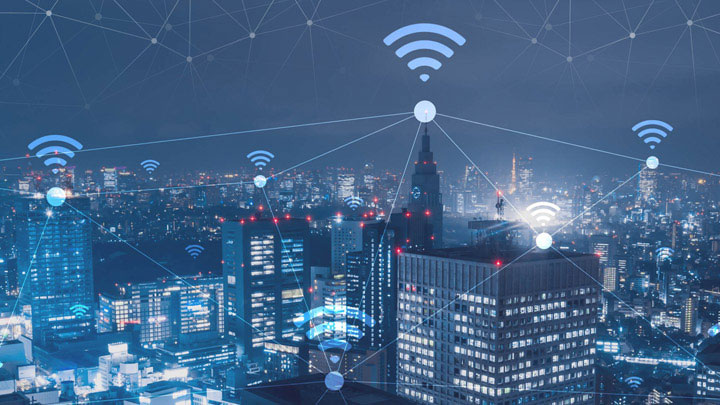
This digital connectivity is also the future of lighting. But because it’s in ceilings everywhere from a hospital to a home, in streets, carparks and vehicles – lighting has a far more important role to play. It will become the smart infrastructure behind seamless connectivity: sensing your smartphone as you enter the building; relaying information from various sensors; tracking your movement through corridors; connecting to your computer as you work; confirming you’ve left the building in an emergency. Now lighting connectivity options and digital controllers already enable us to check the energy consumption and status of individual LED luminaires – on, off, or even out – and control them via apps. The resulting adaptive lighting saves energy to pay for the service and meet sustainability targets. And the future will just get brighter.
How does that work?
Connected lighting requires two things – a practical way to connect, and smart lighting that can send and receive data.
Connectivity – At the moment short-range connectivity technology, like BLE, is used to connect proximate objects like digital headphones, and long-range connectivity options, such as cellular networks, to connect things like digital cars. WiFi does the bulk of connectivity in between. Connected lighting will use a similar variety of options, according to the situation – from controlling an individual luminaire in a home to looking at the lighting consumption of an entire city remotely.
Smart lighting – The pivotal component is the luminaire, which needs to be capable of sending and receiving data across networks. To enable this, Signify has developed a portfolio of connected components, such as our Xitanium SR (sensor-ready) LED drivers that work seamlessly with a growing list of sensors and components – with guaranteed interoperability thanks to our SR Certified partner program. Data can be received to control the light or exchanged to reveal the status of the fixture.
The exciting potential of this bi-directional connectivity technology forms the topic of my next four posts. Stay tuned!

Global Product Manager
Signify

Human-centric lighting: are you ready to ride the wave?
The SR standard now includes a standardized protocol for tunable white light, allowing it to be controlled wirelessly.

Using light to manage space
Connected LED lighting is an obvious way to meet sustainability compliance and the investment pays for itself.

Is a Hue moment approaching for smart commercial lighting?
With the Sensor Ready (SR) standard in place, is a Hue moment approaching for smart commercial lighting?